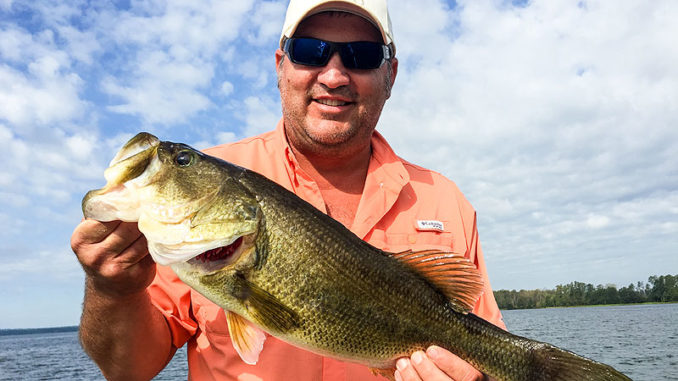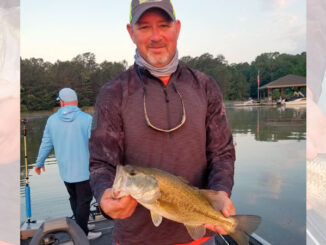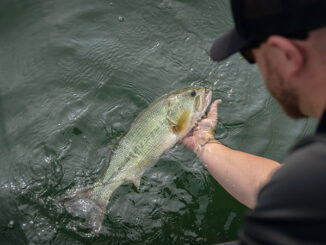
Fish ganging up on main-lake channel bends, ready to feed again after spawn
Come June, the roller coaster that is bass fishing will reach another peak at Falls of the Neuse Lake just east of Durham, N.C.
After the high of prespawn and the low of postspawn, bass will regroup. They’ll gang up on main-lake points and main-channel ledges to gorge on the mass of shad leaving the creeks. Guide Joel Munday of Outdoors Expeditions USA in Holly Springs, N.C., fishes these areas with a variety of bottom-bumping baits as well as topwater plugs.
“In June, the fish haven’t been out on the main lake very long, so they’re fresh,” said Munday (919-669-2959). “They’ll be out of the postspawn funk, schooled up good and eating several times a day instead of just every once in a while. And the thermocline hasn’t set up yet, so you don’t have to worry about that.”
Munday likes to start at the top as shad huddle near the surface first thing in the morning in the normally clearer water of the lower lake. Great places are main-channel bends that are close to a sloping point. Bass will school up there to ambush from below anything that resembles a shad.
Munday’s favorite topwater bait at Falls is a Rebel Pop-R in a shad color. But a Zara Spook will get the job done — or a swimbait retrieved just below the surface.
Switch things up as the sun climbs
As the sun gets up, Munday will continue to target ledges on the main channel where points intersect. He usually starts on the lower end of the lake and works his way up as far as the Cheek Road bridge. But he shifts gears to the bottom of the water column with Carolina- and Texas-rigged worms, football-head jigs and crankbaits. On the deeper, lower end of the lake, Munday will fish water that reaches to around 16 feet deep before plunging into the channel. The upper end may only reach 8 feet or so before the drop.
“I’ll start by having my clients make a long-distance cast over the ledge and identify what the bottom feels like,” Munday said. “I tell them to drag the bait slowly until they get around a piece of cover. And then slow down again and hop or work the bait. On the worms, we’ll usually use a 1/2-ounce weight. But with the jigs we might go up to a ¾-ounce. I like to stay with natural colors like junebug, red bug, green pumpkin or peanut butter and jelly on the jigs. The crankbaits will need to dig into the bottom. I like anything in the Rapala DT series in a natural shad color.”




